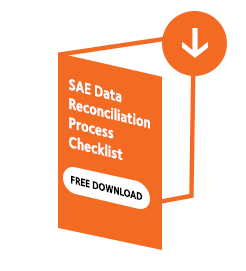Quality is a key component of all aspects of clinical trials and many processes are specifically designed to ensure quality and reliability of the data as well as compliance with regulations such as the Good Clinical Practices (GCP). However, due to the complexity of the work itself, there is still a non-negligible risk of errors. SAE reporting accuracy can be reinforced by SAE reconciliation with the safety database.
Preserving patient safety in clinical trials is one of the pillars of clinical development and the main focus of GCP. Monitoring of a drug’s safety profile in order to protect participants from unwarranted risk, relies heavily on the collection, classification, coding and reporting of Adverse Events (AE). Among all safety data collected, the most critical are those pertaining to serious adverse events (SAE).
An adverse event is considered serious if it results in any of the following outcomes: death, a threat to the patient’s life, inpatient hospitalization or prolongation of an existing hospitalization, a persistent or significant incapacity or substantial disruption of the ability to conduct normal life functions, or a congenital anomaly or birth defect. Other medically important events are also included in the definition.
Automatic and manual data verification routines called “edit checks”, programmed and manual queries, source data verification (SDV) and risk-based monitoring (RBM) are some of the techniques to mitigate and correct imperfections in AE reporting and preserve patient safety in clinical trials. In addition, internal and external audits are conducted to review processes and actions, identify weaknesses and propose corrective and preventive actions (CAPA). Nevertheless, omissions, errors in the transcription of the data, inconsistencies, approximations and deviations from study protocol regularly occur in AE reporting due to the complexity of clinical trials.
There are very few statistics about the quality of the safety data at the initial AE reporting but because the target is 100% quality, specific processes must be devised to reinforce the quality and reliability of safety data and preserve patient safety in clinical trials. In short, whatever the initial error rate might be, a thorough review is necessary.
Generally, SAEs are independently coded, classified and described in a safety database which is independent from the clinical database. This creates a risk of discrepant information that needs to be reconciled before the end of the trial but at the same time provides a separate source of information that can be used to validate the clinical data. Therefore, SAE reconciliation has a dual utility: clean the safety data in both databases and enhance the overall quality. A win-win situation.
DOWNLOAD NOW THE FREE SAE RECONCILIATION HANDBOOK
The Manual / Reference Book with all the topics related to the Safety Data Reconciliation Management.







